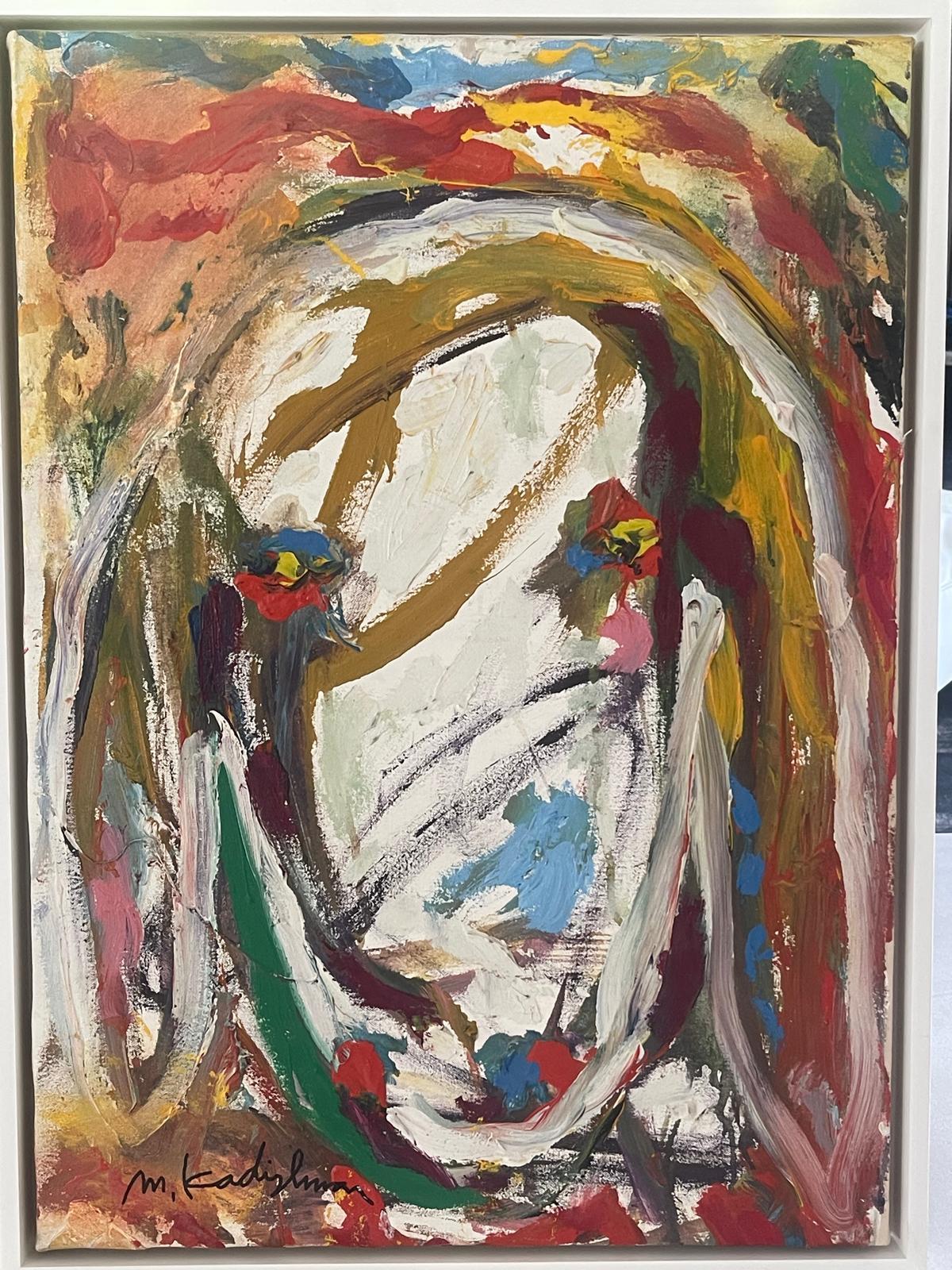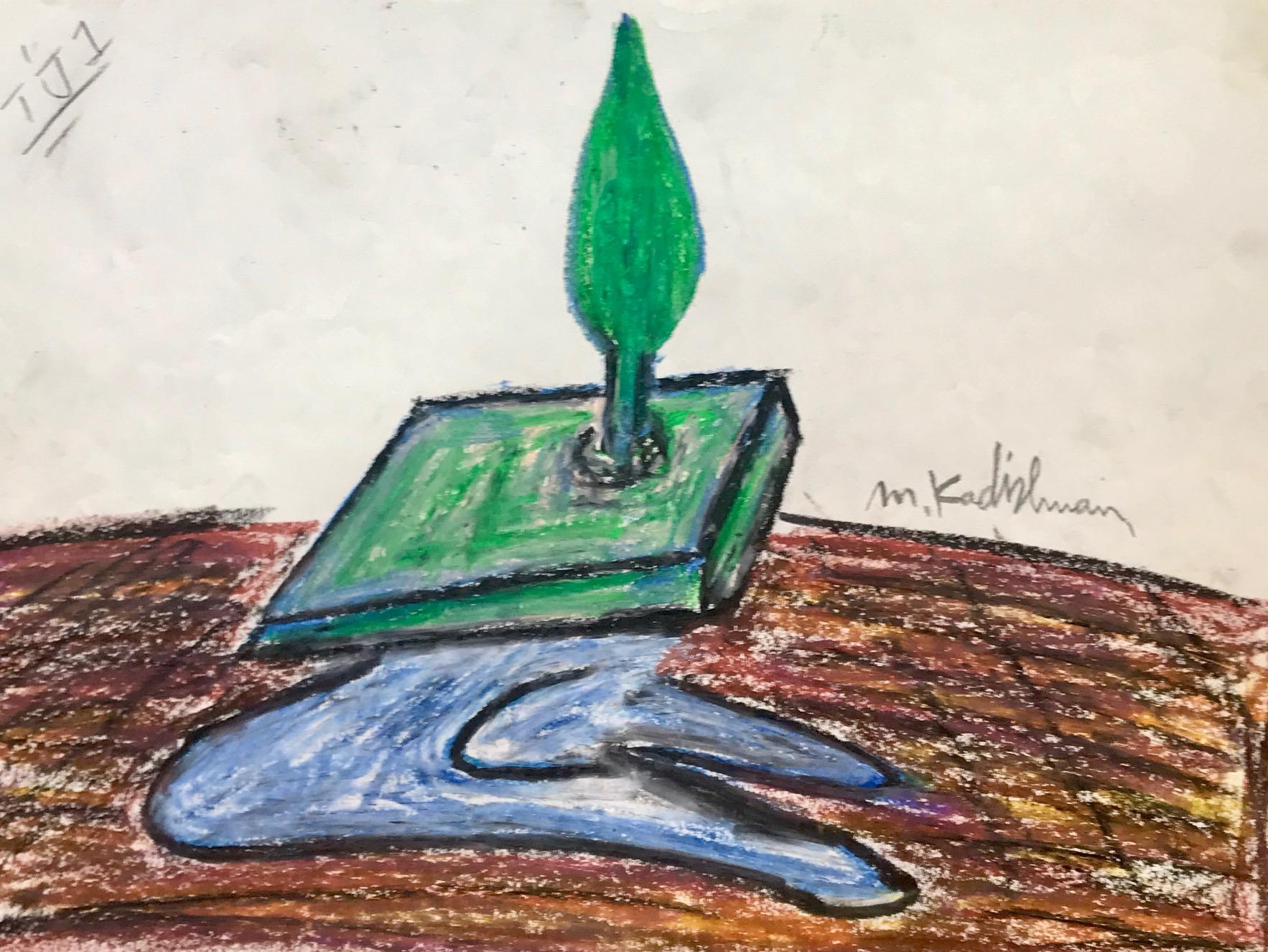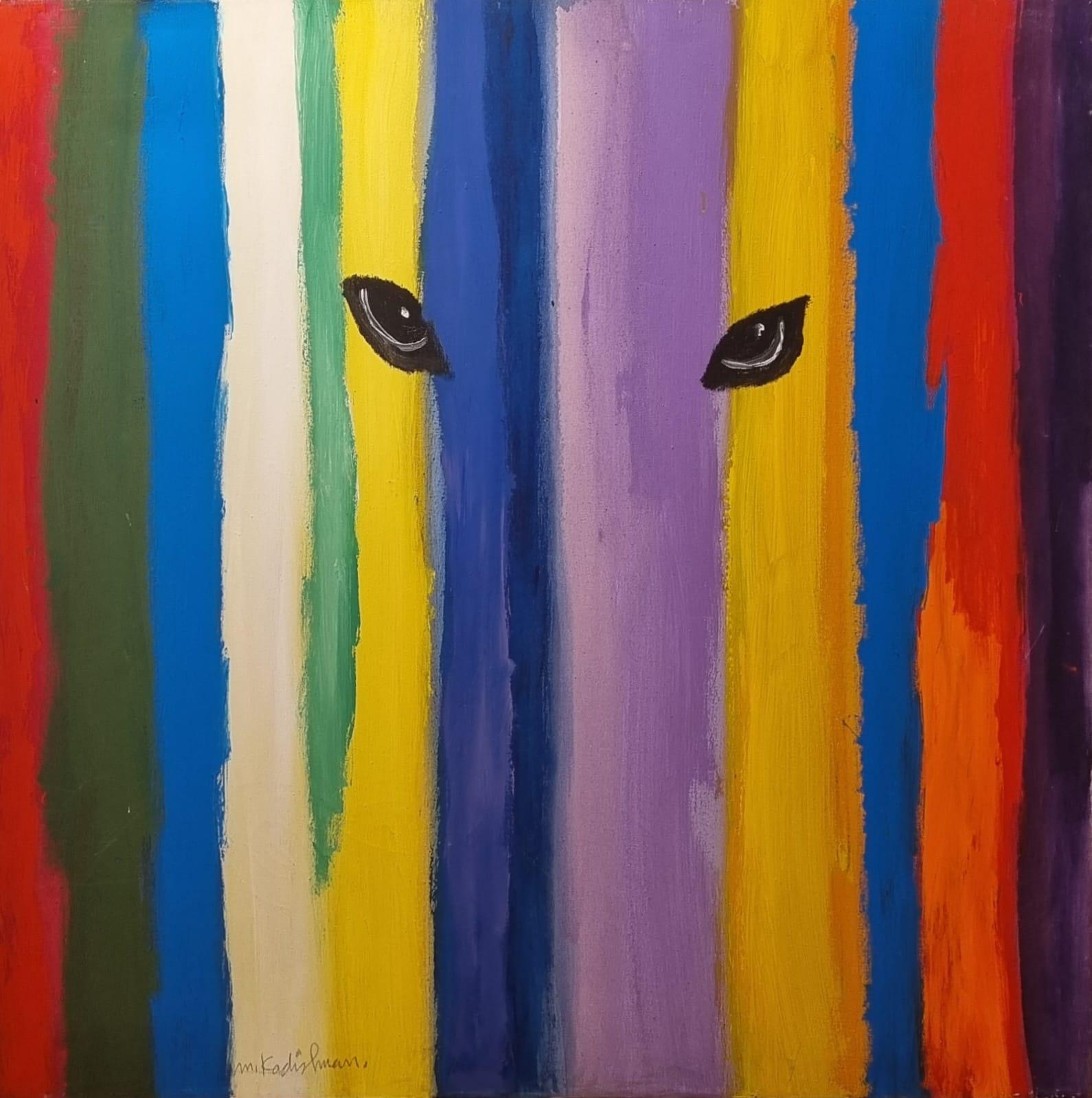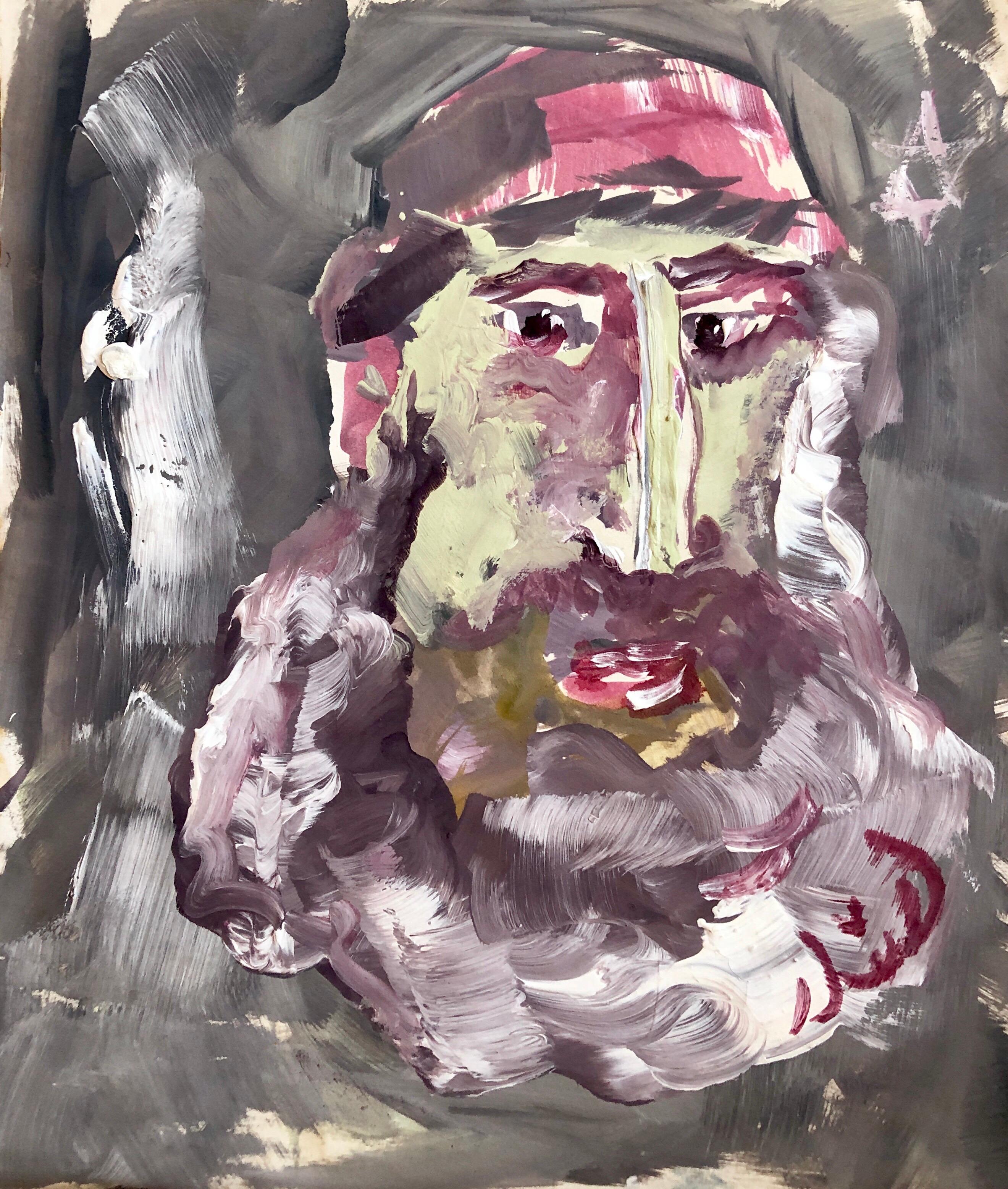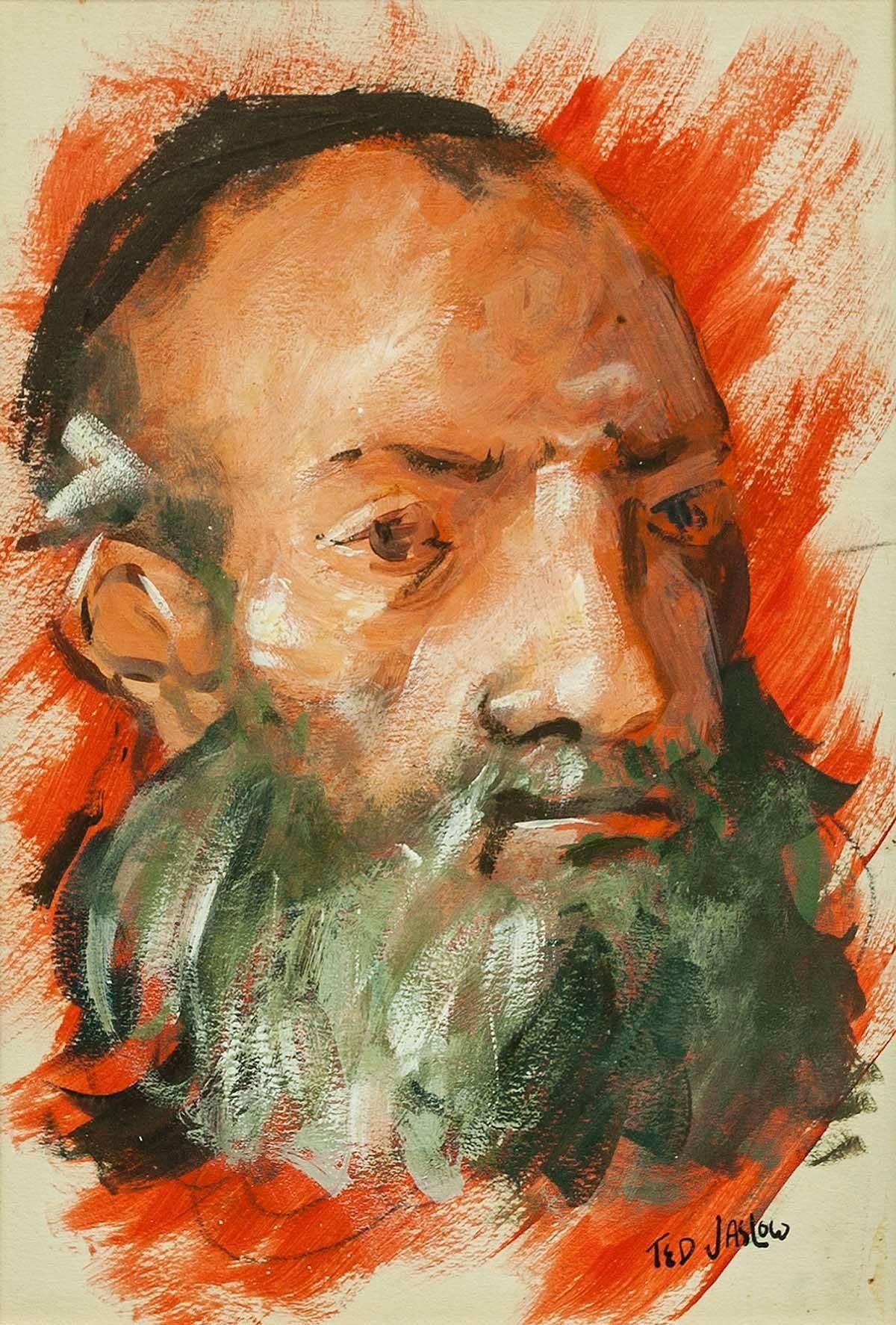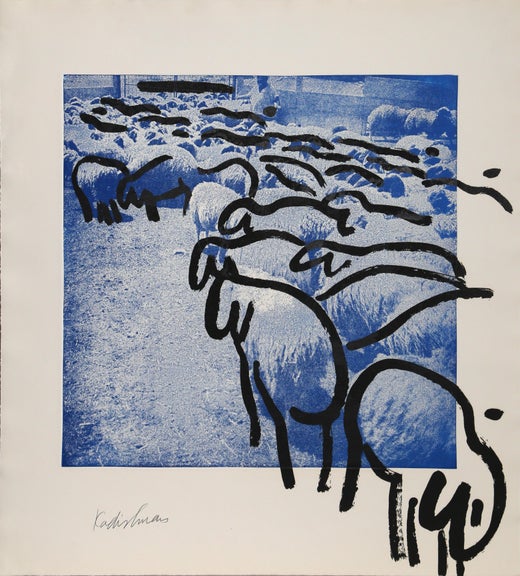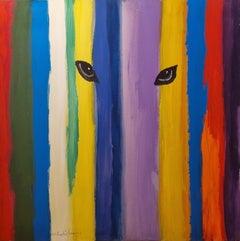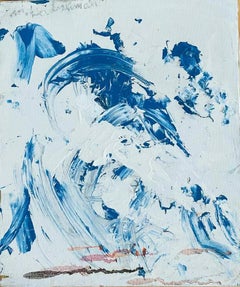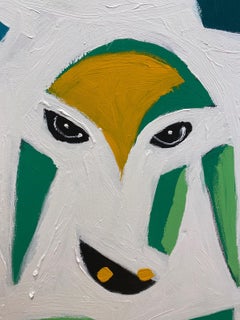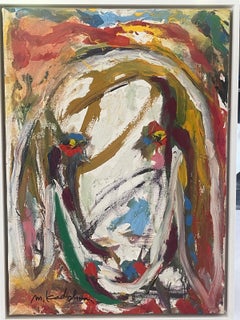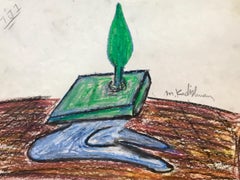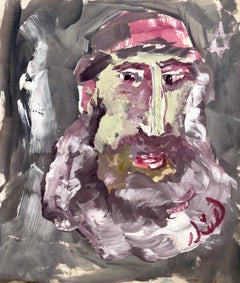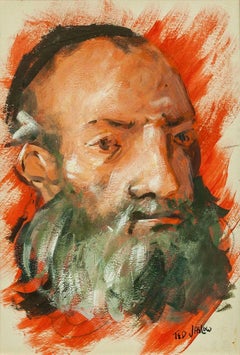Items Similar to Herzl's vision
Want more images or videos?
Request additional images or videos from the seller
1 of 8
Menashe KadishmanHerzl's vision1989
1989
$20,000
£15,136.90
€17,372.78
CA$28,491.66
A$30,899.88
CHF 16,229.79
MX$375,331.44
NOK 203,090.16
SEK 191,220.73
DKK 129,755.12
About the Item
Menashe Kadishman was an Israeli sculptor, painter, and graphic artist best known for his colorful paintings of sheep and large-scale metal sculptures.
In the painting, Theodor Herzl, the father of Zionism, is standing on the balcony in the city of Basel, surrounded by illustrations embodying the realization of his dream in Israel.
- Creator:Menashe Kadishman (1932, Israeli)
- Creation Year:1989
- Dimensions:Height: 39.38 in (100 cm)Width: 27.56 in (70 cm)
- More Editions & Sizes:uniquePrice: $20,000
- Medium:
- Movement & Style:
- Period:
- Condition:The painting is in a very good condition.
- Gallery Location:Jerusalem, IL
- Reference Number:1stDibs: LU1809212875022
Menashe Kadishman
Menashe Kadishman was born in Mandate Palestine. His father died when he was 15 years old. He left school to help his mother and provide for the family.[1] From 1947 to 1950, Kadishman studied with the Israeli sculptor Moshe Sternschuss at the Avni Institute of Art and Design in Tel Aviv, and in 1954 with the Israeli sculptor Rudi Lehmann in Jerusalem. In 1950–1953, Kadishman worked as a shepherd on Kibbutz Ma'ayan Baruch. This experience with nature, sheep and shepherding had a significant impact on his later artistic work and career. In 1959, Kadishman moved to London to study at Saint Martin's School of Art and the Slade School of Art.[2] In 1959-1960 he also studied with Anthony Caro and Reg Butler.[2] He had his first one-man show there in 1965 at the Grosvenor Gallery. In 1972, he returned to Israel. In the 1960s, Kadishman's sculptures were Minimalist in style, and so designed as to appear to defy gravity. This was achieved either through careful balance and construction, as in Suspense (1966), or by using glass and metal so that the metal appeared unsupported, as in Segments (1968). The glass allowed the environment to be part of the work. The first major appearance of sheep in his work was at the 1978 Venice Biennale, where Kadishman presented a flock of colored live sheep as living art.[4] In 1995, he began painting portraits of sheep by the hundreds, and even thousands, each one different from the next. These instantly-recognizable sheep portraits soon became his artistic "trademark"
About the Seller
No Reviews Yet
Vetted Professional Seller
Every seller passes strict standards for authenticity and reliability
Established in 1995
1stDibs seller since 2022
13 sales on 1stDibs
- ShippingRetrieving quote...Shipping from: Jerusalem, Israel
- Return Policy
Authenticity Guarantee
In the unlikely event there’s an issue with an item’s authenticity, contact us within 1 year for a full refund. DetailsMoney-Back Guarantee
If your item is not as described, is damaged in transit, or does not arrive, contact us within 7 days for a full refund. Details24-Hour Cancellation
You have a 24-hour grace period in which to reconsider your purchase, with no questions asked.Vetted Professional Sellers
Our world-class sellers must adhere to strict standards for service and quality, maintaining the integrity of our listings.Price-Match Guarantee
If you find that a seller listed the same item for a lower price elsewhere, we’ll match it.Trusted Global Delivery
Our best-in-class carrier network provides specialized shipping options worldwide, including custom delivery.More From This Seller
View AllThe Shepherd
By Menashe Kadishman
Located in Jerusalem, IL
A beautiful and unique large scale oil painting by Israeli artist Menashe Kadishman.
Featuring a figure of a shepherd and his flock of sheep.
Category
1980s Paintings
Materials
Canvas, Oil
Rainbow Eyes
By Menashe Kadishman
Located in Jerusalem, IL
A wonderful work of art by famous Israeli artist Menashe Kadishman.
Category
1990s Other Art Style Animal Paintings
Materials
Canvas, Acrylic
The Tide
By Menashe Kadishman
Located in Jerusalem, IL
Menashe Kadishman - The Tide - Kings Gallery - Fine art - Israeli art - Israeli artist - international art - Sheep.
“The Tide” by Menashe Kadishman
Menashe Kadishman721ViewsItamarIta...
Category
1980s Abstract Abstract Paintings
Materials
Canvas, Oil
Gesture to Mondriaan
By Menashe Kadishman
Located in Jerusalem, IL
Menashe Kadishman - Gesture to Mondriaan - Jerusalem - Kings Gallery - Fine art -International art - Gallery art - Sheep.
“Gesture to Mondriaan” by Menashe Kadishman
Menashe Kadishma...
Category
1970s Figurative Paintings
Materials
Canvas, Oil
Sheep on rainbow
By Menashe Kadishman
Located in Jerusalem, IL
A beautiful Menashe Kadishman painting made with the artist's signature style and technique.
The painting depicts a colorful and special sheep with a rainbow underneath.
creating a c...
Category
1990s Contemporary Paintings
Materials
Acrylic
Purple sheep
By Menashe Kadishman
Located in Jerusalem, IL
Menashe Kadishman - Purple Sheep - Kings Gallery - Fine art - Sheep.
“Purple sheep” by Menashe Kadishman
Menashe Kadishman690Viewsadmin
Birkat Cohanim
A piece by famous Israeli artist Menashe Kadishman. The painter's trademark are hundreds of portraits of sheep, each one unique. The purple sheep with expressive sad eyes...
Category
Late 20th Century Animal Paintings
Materials
Canvas, Oil
You May Also Like
Menashe Kadishman, Sheep head , Acrylic on canvas
By Menashe Kadishman
Located in Tel Aviv, IL
Menashe Kadishman, Sheep head, Symbolist painting, colored painting, Israeli art, Israeli art
Category
1980s Symbolist Animal Paintings
Materials
Acrylic
No title
By Menashe Kadishman
Located in Tel Aviv - Jaffa, IL
Original drawing with pastel on paper
Unique piece
Handsigned
Provenance : Matsart Auction House Jerusalem
Category
21st Century and Contemporary Animal Drawings and Watercolors
Materials
Pastel
Outsider Folk Art Expressionist Rabbi Israeli Painting Signed Hebrew Jewish Star
Located in Surfside, FL
This is a signed portrait painting done in an outsider, folk art, expressionist style. it is signed in Hebrew, also marked with a Jewish star. this is from a collection of works by the same hand. they are all signed. Some have markings to the back of the paper. they have some age to them. They bear similarities to artists as dissimilar as Moshe Tamir, Mane Katz and an Israeli version of Purvis Young. In this piece the artist choice of colors is muted yet powerful.
Israel has had a Vibrant Folk Art, Naive art scene for a long time now, artists like Yisrael Paldi, Nahum Guttman, Reuven Rubin and even Yefim Ladyzhensky had naive periods. The most well know of the strict naive artists are Shalom of Safed, Irene Awret, Gabriel Cohen, Natan Heber, Michael Falk and Kopel Gurwin.
Naïve art is any form of visual art that is created by a person who lacks the formal education and training that a professional artist undergoes (in anatomy, art history, technique, perspective, ways of seeing). Unlike folk art, naïve art does not necessarily evince a distinct cultural context or tradition. Naïve art is recognized, and often imitated, for its childlike simplicity and frankness. Paintings of this kind typically have a flat rendering style with a rudimentary expression of perspective.
One particularly influential painter of "naïve art" was Henri Rousseau (1844–1910), a French Post-Impressionist who was discovered by Pablo Picasso.
Naïve art is often seen as outsider art that is by someone without formal (or little) training or degree. While this was true before the twentieth century, there are now academies for naïve art. Naïve art is now a fully recognized art genre, represented in art galleries worldwide.
Museums devoted to naïve art now exist in Kecskemét, Hungary; Riga, Latvia; Jaen, Spain; Rio de Janeiro, Brasil; Vicq France and Paris. "Primitive art" is another term often applied to art by those without formal training, but is historically more often applied to work from certain cultures that have been judged socially or technologically "primitive" by Western academia, such as Native American, sub saharan African or Pacific Island art (see Tribal art). This is distinguished from the self-conscious, "primitive" inspired movement primitivism. Another term related to (but not completely synonymous with) naïve art is folk art.
There also exist the terms "naïvism" and "primitivism" which are usually applied to professional painters working in the style of naïve art (like Paul Gauguin, Mikhail Larionov, Paul Klee).
At all events, naive art can be regarded as having occupied an "official" position in the annals of twentieth-century art since - at the very latest - the publication of the Der Blaue Reiter, an almanac in 1912. Wassily Kandinsky and Franz Marc, who brought out the almanac, presented 6 reproductions of paintings by le Douanier' Rousseau (Henri Rousseau), comparing them with other pictorial examples. However, most experts agree that the year that naive art was "discovered" was 1885, when the painter Paul Signac became aware of the talents of Henri Rousseau and set about organizing exhibitions of his work in a number of prestigious galleries.
The Earth Group (Grupa Zemlja) were Croatian artists, architects and intellectuals active in Zagreb from 1929 to 1935. The group included the painters Krsto Hegedušić, Edo Kovačević, Omer Mujadžić, Kamilo Ružička, Ivan Tabaković, and Oton Postružnik, the sculptors Antun Augustinčić, Frano Kršinić, and the architect Drago Ibler. Art brut, primitive art, primitive, art naïf, naïve art. Outsider art. A term applied to Yugoslav (Croatian) naive painters working in or around the village of Hlebine, near the Hungarian border, from about 1930. Some of the best known naive artists are Dragan Gaži, Ivan Generalić, Josip Generalić, Krsto Hegedušić, Mijo Kovačić, Ivan Lacković-Croata, Franjo Mraz, Ivan Večenaj and Mirko Virius.
Camille Bombois (1883–1970) Ferdinand Cheval, known as 'le facteur Cheval' (1836–1924)
Henry Darger (1892–1973) L. S. Lowry (1887–1976) Grandma Moses, Anna Mary Robertson (1860–1961) Nikifor (1895–1968) Poland, Horace Pippin (1888–1946) Jon Serl (1894-1993) United States
Alfred Wallis (1855–1942) Scottie Wilson (1890–1972) Gesner Abelard (b. 1922) Jan Balet (1913–2009) Michel Delacroix (b. 1933) France Howard Finster (1916–2001) Ivan Rabuzin (1921–2008)
Spontaneous Art Museum in Brussels
Art en Marge Museum in Brussels
MADmusée in Liege
International Museum of Naive Art of Brazil in Cosme Velho, Rio de Janeiro
Gallery Jacques Ardies in São Paulo
Musée international d'art naïf de Magog in Magog
Croatian Museum of Naïve Art in Zagreb
Gallery of Croatian Naïve Art...
Category
20th Century Outsider Art Portrait Paintings
Materials
Gouache
Bold Expressionist Rabbi, Judaica painting
By Ted Jaslow
Located in Surfside, FL
TED JASLOW
Brooklyn, New York, USA, b. 1934
Ted Jaslow (b.1934) was born in Brooklyn, New York, the grandson of a Russian woodcarver.
He was initially interested in sculpture, and l...
Category
20th Century Expressionist Portrait Paintings
Materials
Paper, Oil
Modernist Rabbi Judaica Bold Color "School of 10"
By Ben-Zion Weinman
Located in Surfside, FL
Dimensions w/Frame: 16" x 8" x 1 1/2"
Born in 1897, Ben-Zion Weinman celebrated his European Jewish heritage in his visual works as a sculptor, painter, and printmaker. Influenced by Spinoza, Knut Hamsun, and Wladyslaw Reymont, as well as Hebrew literature, Ben-Zion wrote poetry and essays that, like his visual work, attempt to reveal the deep “connection between man and the divine, and between man and earth.”
An emigrant from the Ukraine, he came to the US in 1920. He wrote fairy tales and poems in Hebrew under the name Benzion Weinman, but when he began painting he dropped his last name and hyphenated his first, saying an artist needed only one name.
Ben-Zion was a founding member of “The Ten: An Independent Group” The Ten” a 1930’s avant-garde group, Painted on anything handy. Ben-Zion often used cabinet doors (panels) in his work. Other members of group included Ilya Bolotowsky, Lee Gatch, Adolf Gottlieb...
Category
20th Century Fauvist Figurative Paintings
Materials
Coating, Oil, Board
Rabbi Elyah Succot Colorful Jewish Psuedo-Abstraction
Located in New York, NY
Rabbi Elyah Succot
From Zion Comes Forth The Torah, c. late 20th/early 21st century
Gouache and ink on paper
Sight: 10 1/2 x 11 3/4 in.
Framed: 17 1/2 x 18 7/8 x 1 1/8 in.
Signed lo...
Category
20th Century Abstract Paintings
Materials
Paper, Ink, Gouache
More Ways To Browse
Paintings of Sheep
Sheep Sculpture
19th Century British Landscape Paintings
Impasto Painting
Minneapolis Art
Old Painting Oil On Panel
Oil Painting Of Two Women
Oil Painting Lilacs
Large Modern Abstract Bold Painting
Geometric Abstract 20th Century Paintings
The Hague
Tiger Art and Photography
Portrait Of A Man Oil On Canvas
Reflections Painting
American Abstract Artists
20th Century British Painting
Antique Framed Victorian Painting
Israeli Artists
